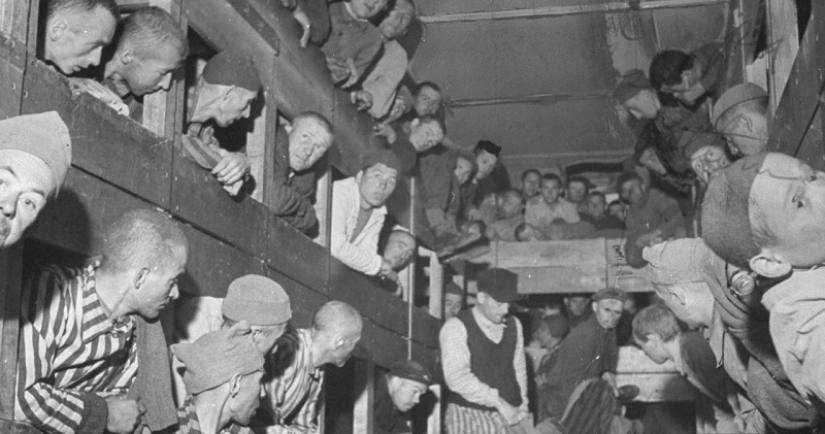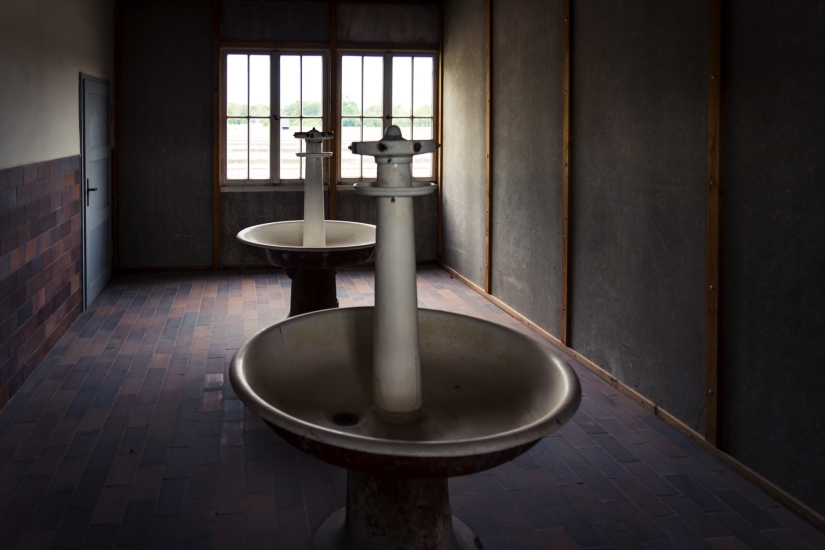"Think how we died": a horror story in the Dachau concentration camp
On April 29, 1945, Dachau concentration camp was liberated by units of the 45th Infantry Division of the 7th American Army. On this day, the Dachau massacre took place: during the capture of the concentration camp, American soldiers from the 45th Division of the US Infantry, part of the 7th Army, killed and wounded German prisoners of war. (Careful! The material may seem unpleasant or frightening.)

Dachau is one of the first concentration camps of Nazi Germany. For 12 years, more than 240 thousand prisoners passed through it, 70 thousand of whom died. Dachau is notorious for medical experiments on prisoners. Doctors from all over the Reich studied the abilities of the human body in Dachau: survival at low temperatures, exposure to gases or low pressure. With the help of these experiments, they intended to create a universal soldier. Himmler himself regularly visited Dachau with inspections to observe the progress of the experiments.
History of appearance

In February 1933, the Reichstag was set on fire. Hitler, who had been appointed Reich Chancellor two days earlier, accused the Communists of using this event to strengthen the influence of his own party. A state of emergency was imposed for a period of five years and a new law "On the protection of the People and the State" was adopted. This law became the basis for the creation of a special place of detention for political opponents of the Reich. So Dachau appeared.
At first, more than 10 thousand members of the Communist Party were exiled to the camp, but then the law was gradually extended to all other "polluting the Aryan race" according to racial theory. This list included Jews, drug addicts, gypsies, the mentally ill, homosexuals, homeless people and even those who refused to serve in the army.

The original gate of the camp with the inscription "Labor liberates". After this artifact was stolen and discovered in Norway only two years later, it was placed in a museum

Monument to the dead on the main square of the camp
Prisoners

The life of Dachau prisoners was not much different from the life of prisoners of other concentration camps. They were used as free labor: the unfortunate built roads, mined stones and drained swamps. During the war, they were taken to military factories to collect equipment and ammunition. There were so many prisoners in concentration camps that their labor was sold to private companies.
Upon arrival at the camp, the prisoners were deprived of all rights. They were given a striped robe with a color label depending on the category: gypsy, Jew, political prisoner, and so on. Some were shot immediately upon arrival at the camp. Usually such a fate awaited Soviet soldiers.

Toilet room, one per barrack, where up to 1600 people lived

Washbasins
Experiments on people
Backbreaking work was not the worst thing the prisoners of Dachau faced. Numerous medical experiments on people were conducted here in order to determine the ability of the human body to survive. The prisoners who were subjected to these experiments rarely remained alive.

The infamous gas chamber

The view from the outside. Holes in the wall for gas cans
The course and results of each experiment were carefully documented. Doctors opened the bodies and described the causes of death, drew conclusions about which parts of the human body are particularly vulnerable. By the way, the Nazi experiments on living people subsequently formed the basis of many medical discoveries of the XX century. This fact is rarely mentioned, because it sounds like some kind of justification for the Holocaust.

Crematorium building

Some of the experiments conducted in Dachau
An experiment with head injuries. A person was tied to a chair and every few seconds a hammer was struck on the head with increasing force. The goal was to find out the maximum impact force that the skull can withstand, and to determine the moment when it is no longer possible to save a person from death.
Experiments with freezing. Prisoners were immersed in a cell with cold water, bringing the body temperature to extremely low values. If the subject survived, methods of escape from hypothermia were tested on him. According to the results of experiments, it turned out that hypothermia of the occipital part of the head leads to death faster, so foam inserts were added to the helmets of Luftwaffe pilots, which kept their heads afloat in the event of a crash in the cold sea.

A moat with water stretched along the perimeter of the camp. When approaching the fence, which was under tension, the guards opened fire to kill
Sterilization experiments. German scientists were looking for the most effective way to sterilize groups of people with minimal costs, including using radiation. The reason was the law according to which homosexuals, the mentally ill, alcoholics and other "harmful to the Aryan race" people had to undergo mandatory sterilization. Most often, the drugs caused bleeding or cancer.
Experiments with blood clotting. Prisoners were forced to take various medications to improve blood clotting, and then their limbs were shot or cut off. The goal was to find a cure that would allow soldiers to survive with a lot of blood loss.
The Dachau Massacre

On April 29, 1945, the American army captured Dachau. The soldiers were discouraged by what they saw. There were more than 40 wagons filled with corpses in front of the entrance to the camp. Almost the entire territory of Dachau was littered with bodies. There are two versions of what happened next.
According to one version, the Americans machine-gunned all 560 camp staff that evening at the wall of the coal mine, without waiting for an official order. Judging by the memoirs of some of the participating soldiers, they were shocked by the cruelty that their distraught colleagues were doing.


Poplar alley planted by relatives of prisoners as a sign of remembrance
Anyway, the Dachau massacre was immediately assessed as a war crime, but then the American military governor who came to power in Bavaria dropped all charges against the soldiers for what happened.

Monument "Think about how we died here"
Keywords: World War II | Concentration camp | Nazi Germany | Prisoners
Post News ArticleRecent articles

At first glance, these colorful works look like ordinary paintings - but upon closer inspection, it turns out that they are made... ...

I want to somehow distract myself from the news about the pandemic and plunge into the beautiful. Here, for example, is a story ...
Related articles

General Dmitry Karbyshev — one of the Soviet commanders who performed his duty to the end. This man was captured in the battle, ...

Nowadays, in big sports, sometimes there are questions to athletes who are suspected of being men. Modern scientists are well aware ...

Franz Stangl was arrested on a grand scale. Several police cars and armored vehicles with machine guns, raising dust, surrounded a ...

Serbian surrealist artist Dragan Ilić creates astonishing and provocative paintings that blend symbolism with eroticism, and ...